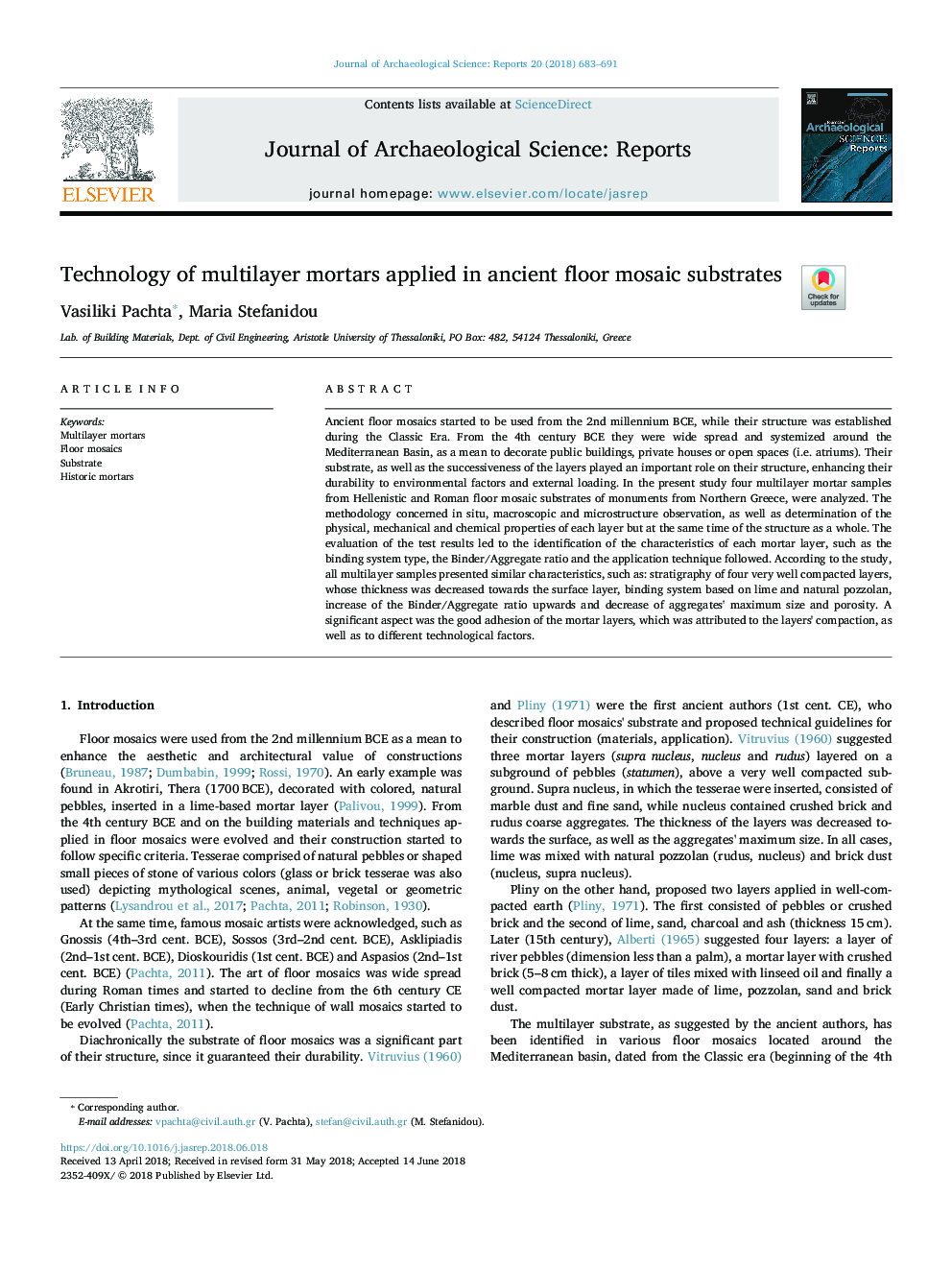| Article ID | Journal | Published Year | Pages | File Type |
|---|---|---|---|---|
| 7444634 | Journal of Archaeological Science: Reports | 2018 | 9 Pages |
Abstract
Ancient floor mosaics started to be used from the 2nd millennium BCE, while their structure was established during the Classic Era. From the 4th century BCE they were wide spread and systemized around the Mediterranean Basin, as a mean to decorate public buildings, private houses or open spaces (i.e. atriums). Their substrate, as well as the successiveness of the layers played an important role on their structure, enhancing their durability to environmental factors and external loading. In the present study four multilayer mortar samples from Hellenistic and Roman floor mosaic substrates of monuments from Northern Greece, were analyzed. The methodology concerned in situ, macroscopic and microstructure observation, as well as determination of the physical, mechanical and chemical properties of each layer but at the same time of the structure as a whole. The evaluation of the test results led to the identification of the characteristics of each mortar layer, such as the binding system type, the Binder/Aggregate ratio and the application technique followed. According to the study, all multilayer samples presented similar characteristics, such as: stratigraphy of four very well compacted layers, whose thickness was decreased towards the surface layer, binding system based on lime and natural pozzolan, increase of the Binder/Aggregate ratio upwards and decrease of aggregates' maximum size and porosity. A significant aspect was the good adhesion of the mortar layers, which was attributed to the layers' compaction, as well as to different technological factors.
Keywords
Related Topics
Social Sciences and Humanities
Arts and Humanities
History
Authors
Vasiliki Pachta, Maria Stefanidou,
